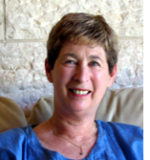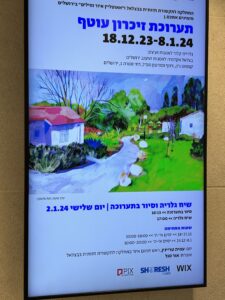By Dorothea Shefer-Vanson


MEVASSERET ZION, Israel — The Bezalel Academy of Arts and Design, Israel’s foremost art academy, is named for Bezalel ben Uri, who is mentioned in the Bible as the artist and artisan responsible for designing and building the Tabernacle and the Ark of the Law when the Children of Israel were making their long journey to the Promised Land.
The concept of a Zionist academy producing artists and artisans engaged in creating artistic artifacts in a variety of media was first proposed in 1903 by the artist Boris Schatz, and gained the immediate support of the Zionist Congress. This led to the establishment of the academy in Jerusalem in 1906, long before Israel existed as an independent state.
Since then it has grown and developed, undergoing a series of transformations and modifications, moving from one site to another in Jerusalem until its latest incarnation in its grand new custom-built building in downtown Jerusalem. So, from its symbolic ‘ivory tower’ on Mount Scopus, the Academy has moved to become embedded in the very heart of the capital, close to the Old City of Jerusalem.
The new location is adjacent to the building of the Jerusalem Municipality on the site known as the Russian Compound, where the Russian church, the Magistrate’s Court and the offices (and holding cells) of the Israel Police Force are located. The exterior of the huge new Bezalel Academy building consists of an expanse of glass windows, evidently aspiring to provide those within with maximum natural daylight.
Inside the building the various departments fill the four spacious stories with plenty of room for workshops, classrooms, studios and exhibition space. The departments include several, such as the Department of Visual Communication, the Media and Technology Center and the Department of Screen-Based Arts, which cannot have been imagined at the time the Academy was founded. An expansive, well-equipped dining room, along which runs an open terrace, provides an entrancing (and appetizing) view over Jerusalem. No one is ever going to feel claustrophobic in this building.
A plaque embedded into the entrance wall of the building states in Hebrew, Arabic and English: “Bezalel Academy of Arts and Design, Jerusalem; Based on principles of human dignity, equality, pluralism and freedom of thought, speech and creative expression.” One can only hope that the students, who come from all segments of Israeli society, will benefit from this noble aspiration.
When I visited the building it was hosting an exhibition entitled ‘Remembering the Envelope,’ presenting graphic depictions of the western Negev area on the border with Gaza which was attacked by Hamas terrorists on October 7, 2023. The works depict life in the region before the massacre, focusing on its serenity and agricultural character. It also seeks to raise funds to assist the residents of the area who have had to leave their devastated homes.
The new location of the Bezalel Academy of Arts and Design in the center of Jerusalem brings its students into contact with the city’s general population, which is drawn from a wide variety of cultures, ethnic groups, occupations and backgrounds. It also gives the residents of Jerusalem the opportunity to absorb aspects of art and culture which were previously far removed from their everyday life. Hopefully, both sides will benefit from this interaction.
*
Dorothea Shefer-Vanson is an author and freelance writer based in the Jerusalem suburb of Mevasseret Zion. She may be contacted via dorothea.shefer@sdjewishworld.com